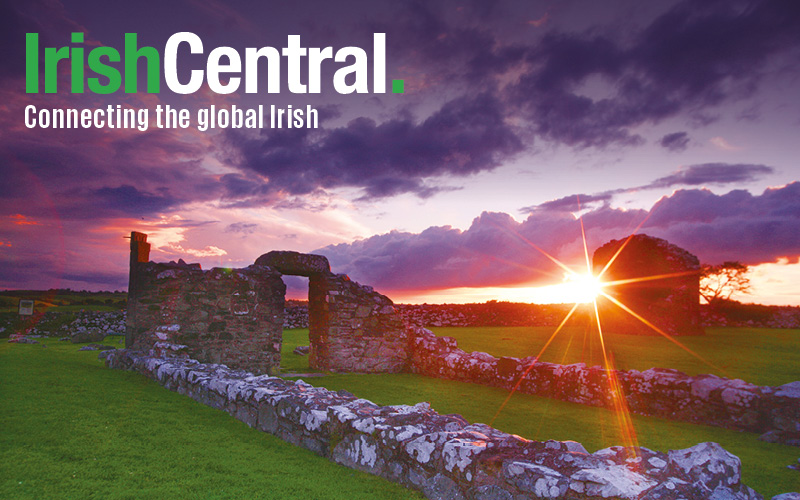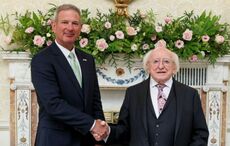Upcoming events for Northern Ireland include the July 12th celebrations and a British-Irish intergovernmental conference but what will follow?
Summer is a season of marches in Northern Ireland. None are more revered by the Orange Order than those on July 12th, commemorating William of Orange’s victory over Catholic King James II at the Battle of the Boyne in 1690. “Twelfth Celebrations” include daytime marches and “Twelfth Night” bonfires.
Usually, marching season is not a propitious time for political leaders to address pressing societal challenges. The marches and bonfires can take on sectarian overtones. Last year, a coffin bearing a picture of Martin McGuinness was burned on a bonfire pyre. During summer, leaders hold their breath and hope events do not spiral out of control, as has happened in the past.
Twenty years ago, less than two months after voters north and south affirmed the Belfast/Good Friday Agreement, intense anger boiled over at Drumcree, Co. Armagh. The Parades Commission banned a march along the Garvaghy Road in Drumcree. Tens of thousands of Orangemen confronted police in protest of the decision. Hundreds of petrol bombs were tossed during the days leading up to the Twelfth.
In the early morning hours of July 12th, three Catholic children - Richard, Mark and Jason Quinn (ages 8-10) - were burned alive in their beds in a sectarian attack in Ballymoney, Co. Antrim. It is believed the murders were committed by members of the Ulster Volunteer Force.
Amid widespread condemnation, some voices stood out. Deputy Orange Order Chaplain Reverend William Bingham referred to the killings in his Sunday sermon, telling congregants “a road is not worth a life.” Newly elected Stormont First Minister David Trimble repeated those words, when telling Drumcree protesters to go home. Northern Ireland Secretary Mo Mowlam urged people to consider what they could have done to prevent the tragedy. She called on everyone “to take a moment to think about the collective responsibility, the collective failure we all share because of last night.”
The deaths of the Quinn brothers ended the violent protest in Drumcree that year.
That kind of hatred, violence and evil has not accompanied marches in recent years. In fact, last year, unionists and nationalists agreed to terms for conducting the first Orange Order parade through the nationalist Ardoyne district in North Belfast in two decades. It was peaceful and respectful.
Despite the improving summer-time atmosphere, the practice of putting attempts to address pressing political problems on hold during the summer has continued until now. Northern Ireland Secretary of State Karen Bradley has called the first British-Irish Intergovernmental Conference, since 2007. It will be held in London later this month.
The conference, established by the Belfast/Good Friday Agreement, is a joint British-Irish consultative body for dialogue and cooperation on issues in Northern Ireland. It is not an executive body and, therefore, not a substitute for the long-suspended Stormont government.
The goal of this conference is development of a formula for resurrecting talks between Sinn Fein and the DUP on restoration of Stormont institutions. How to begin to build trust and get the parties negotiating in earnest is the first and foremost challenge. A collaborative, rather than combative, tone will be necessary for success. And, failure will be a “collective responsibility.”
Sinn Fein has welcomed the conference, but the DUP has derided it as a “talking shop.”
Disagreements over stand-alone Irish language legislation, justly dealing with the legacy of the past, marriage equality and strengthening Stormont institutions have collapsed talks in the past. Brexit also casts a large shadow over safeguarding human rights and maintaining open borders. The Stormont negotiations will not resume in the fall, unless the right formula for getting parties to return to the table is generated from this myriad of issues.
Political leaders have also taken individual action this summer. DUP leader Arlene Foster attended a GAA match between Donegal and Fermanagh, her home county. She stood for the Irish national anthem and sat near Sinn Fein deputy leader Michelle O’Neill. Foster said her attendance reflected her desire “to have a shared future for everybody in Northern Ireland . . . a Northern Ireland where everybody feels comfortable and where everybody wants to co-exist together.”
In a similar vein, Irish Taoiseach Leo Varadkar made history as the first Taoiseach to visit Orange Order headquarters in East Belfast. He said his goals were “to learn more about the Protestant heritage,” and “to ensure a future where identify, in all its complexity, whether it’s Irish or British or Northern Irish, or all of these things, is respected and celebrated across the island.”
Relationships are forged through these kinds of gestures. These actions exhibit a willingness to reach across communal divides with the kind of generosity of spirit toward the “other” that was the hallmark of the late Martin McGuinness’ tenure as Stormont Deputy First Minister. As a political leader, he was devoted to building bridges between communities.
In many respects, McGuinness’ personal transformation reflects the transformation of Northern Ireland as a society. Like John Hume and Nelson Mandela before him, his work to achieve peace and national reconciliation required risk taking and courage.
So, in addition to the substantive questions that will be raised this month at the British-Irish Intergovernmental Conference, is it fair to ask Northern Ireland’s political leaders: Who has the courage to complete the work of Martin McGuinness?
This article was submitted to the IrishCentral contributors network by a member of the global Irish community. To become an IrishCentral contributor click here.




Comments